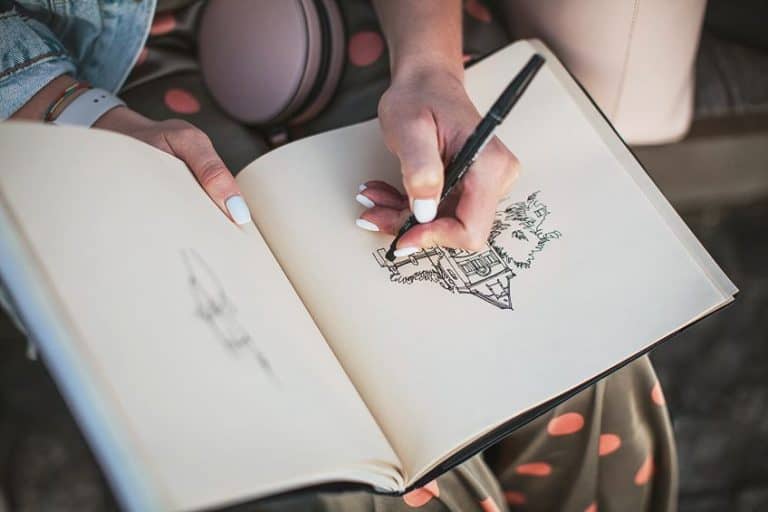What Is Drawing? – A Detailed Introduction to Drawing Artwork
Drawing is considered a visual art, similar to painting and sculpting. Is a drawing definition as simple as you think, or does it encompass more than simply putting pencil to paper? What are the basics of drawing and the various techniques involved? Does drawing require a lot of tools and materials, and who are some famous artists who produced some amazing drawings? Read on to discover the answers to these questions and more.
What Is Drawing?
A very basic drawing definition is describing it as an artist who uses a type of tool to create lines or patterns on a flat surface. Similar to painting, drawing has progressed over the years and has become a little more difficult to define.
Drawing, also called sketching, is an essential form of art, as all artists, whether painters or sculptors, will need to learn the basics of drawing before being able to progress. This has made it commonly associated with observation as well as problem-solving. Drawing has been the foundation of other visual art forms; however, it has also become an acknowledged form of art on its own.
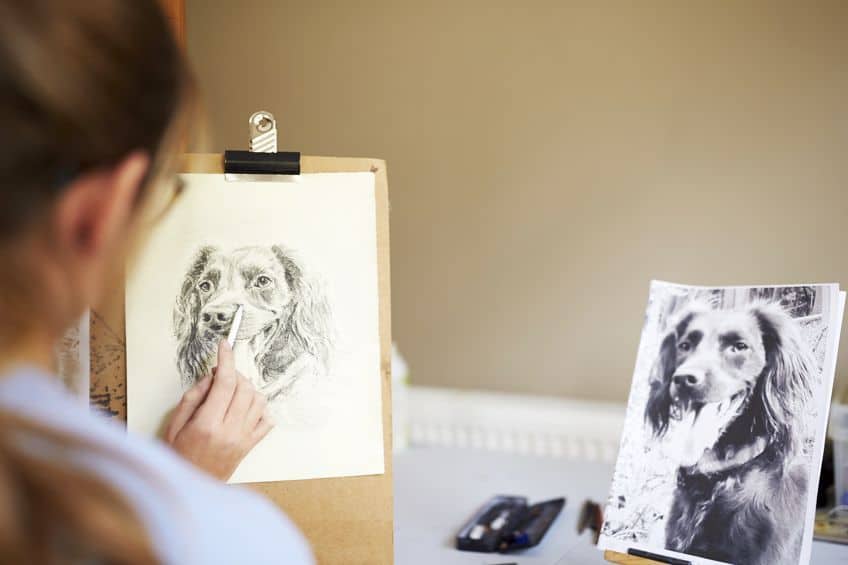
The common means of drawing involves the use of dry media, such as pencils, charcoal, chalk, crayons, pastels, markers, and styluses. However, drawings can also be created using wet media. Ink and pens can also be used to create drawings. Paintbrushes can also be used to draw. There are also water-soluble pencils and crayons you can use. Today, you also have digital drawings that can be done on graphic software using either your finger to draw or a special stylus.
The supports for drawing can also vary, the more familiar one being paper. Other supports can include leather, wood, cardboard, plastic, and canvas, among others. You can also do temporary drawings on surfaces like a whiteboard.
Besides being an art form of creativity, drawing is also often used for other purposes in the business world. You will need to have a drawing background in architecture, engineering, animation, and all kinds of technical drawings. A common name for a person who makes technical drawings is a draftsman.
Today, there is less of a distinction between drawing and painting, as mixed-media art is becoming popular. This is the combined use of drawing, painting, various techniques, and materials, all used to create the final art piece.
The Historical Significance of Drawing
Drawing artwork has been something that has been around since the time humans made drawings on cave walls. It is an easy and excellent way to convey ideas and emotions. One of the first drawing tools to be discovered was a burnt stick, which was used in cave drawings. The first drawing may have been on rocks or walls, but this eventually led to other discoveries, such as the stylus and wax tablets or tabula, which the Romans used. Painters also made markings directly onto the panel or wall that would feature the final painting.
Then you have the Ancient Egyptians, who used papyrus, which was made from natural plant elements. Scribes used reed brushes dipped into ink to write on the papyrus. The real game changer came when the paper made an appearance from China.

Drawing and art during the Middle Ages were greatly directed by religious leaders and institutions. However, this changed during the Renaissance, which would bring about a transformation in how people saw art, which became something everyone could do. This is where the use of charcoal and graphite became popular. Art schools were created, and drawing and painting became something the nobility and rich could enjoy.
Drawing became an easy way to communicate and formed the basis of many paintings and artworks. The drawing was a way to develop or plan what was to be created. Not all artwork, but most drawings were ultimately absorbed by the final work on completion. There have been many findings, where such preliminary drawings or sketches were used, which is known as “sinopia”. A sketch was made on the surface, which was then covered by a thin layer of plaster. These sketches were indicators to help determine the final details of the artwork.
Drawing became more of an art form of itself during the late 14th century.
Drawing was set apart and became more independent, no longer only a part of another art form. A drawing contained the initial structure and continued to precise details on its own. Since then, drawing has developed, and there are now different mediums and styles used to showcase its versatility. Today, drawing is also available to everyone, and also incorporates mixed media, blurring the lines between different art forms.
The Basics of Drawing
Most drawings can be said to be representational, which means that it is a clear drawing of a physical object. These drawings are also done from observation and could be a simple rough sketch before painting. These are known as studies. However, as we have learned, drawings now stand alone as forms of art. This could be something clear, such as a physical object, or it could be more abstract. Whatever the drawing, you will need the proper tools and materials to get started. You will also need a basic understanding of drawing styles and techniques. Let us take a closer look at these different elements for drawing.
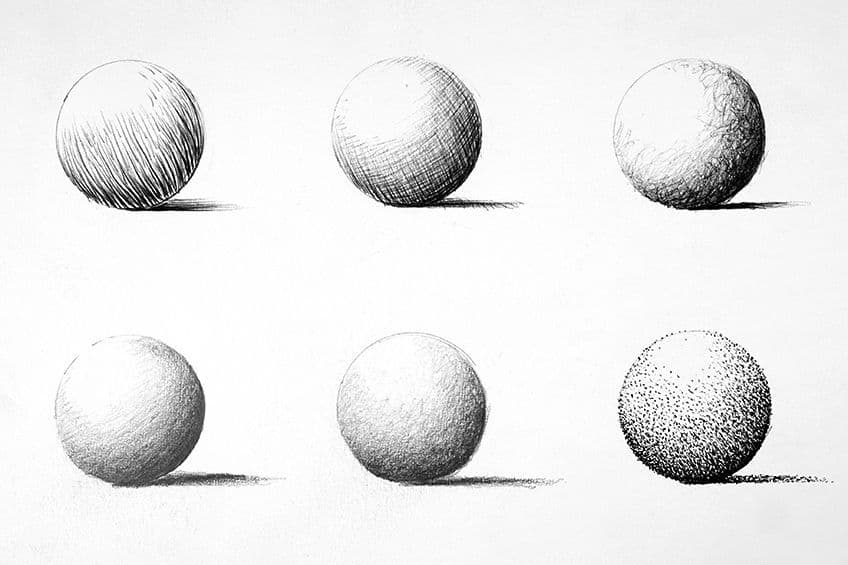
Tools and Materials Required for Drawing
Drawing is one of the more simple art forms and requires very little to begin. All you require to begin is some paper and a pencil. However, there are many varieties of pencils available, including colored pencils. Here are some more drawing tools you can consider using.
- Charcoal
- Pastels
- Chalk
- Ink and pen
- Crayons
- Markers
There are many pencil sets you can purchase, that provide an array of different types of pencils you can use. Besides the drawing tools, you will need paper or a sketchbook. The best paper recommended for drawing is medium tooth paper, which is perfect for different kinds of media. The texture or type of surface is described as the tooth. The weight of a good drawing paper should be about 70 lb. to 80 lb., but you can go heavier as well. You can also draw on canvas, wood, or plaster.
Another tool to get is an eraser, which can come in different forms from a rubber eraser to a kneaded eraser, gum eraser, or plastic eraser.
These are not only to remove mistakes but can be used for different effects. If you are working with pencils, then you will need a pencil sharpener. Some artists like to mix it up, so they have charcoal or ink and pens also in their toolkits. Other items you might want to have included are a set of colored pencils and a blending stump. A blending stump is an important tool, which helps to smudge the surface, and creates gradation in value, without having to use and dirty your finger.
If you are serious about drawing, you might also want to consider a storage place for your art, or a drawing portfolio-art case. This will help to store your drawings neatly and protect them. If you are also on the move a lot, you will need a carry case for all your tools and materials. Many of the art containers you can purchase today have stackable trays and have enough storage for all important items.
Basic Techniques for Drawing
When starting with drawing, begin with a simple shape. There are many sketching approaches you can use to create a drawing. One of the major techniques is called hatching. This is a simple technique involving lines that are placed close to each other.
These lines can either be vertical or horizontal, or diagonal. The closer the lines are, the denser and darker an area looks. Take a step further and intersect these lines, which is called cross-hatching. This can make an area appear even darker. There is also expressive and radial hatching. There are numerous other markings you can make from feathering and zig zag lines to wavy lines and scribbling. Below are a few more drawing techniques to try.
- Stippling: This involves using a bunch of dots, the more dots you have placed together, the darker it becomes. This is great for creating shading.
- Tonal drawing: Simply sweep the pencil over the paper, using the broader part of the pencil. The harder you apply pressure, the darker the tone.

- Blending: You can achieve this by using your finger or a blending stick to create a smoother and more even look.
- Highlights: This can help to show a source of light or a reflection of light. A simple way is to erase some shading already done, to create the effect of the lack of darkness.
- Rendering: This technique is similar to the above, which involves applying graphite to the paper and then removing it to create a softer and blurred effect.
- Subtractive drawing: Here the drawing surface is done with graphite or charcoal, and then areas are removed to reveal an image.
Understanding Line, Shape, Form, and Perspective in Drawing
Before you begin to add heavy shading and other details, it is a good idea to first block in a light sketch. This helps to place the image correctly and makes sure all the proportions and distances are good. You can use a compass to measure different angles, or you can compare the different parts with one another. You can also make use of a finger or take a ruler to work out proportions.
The human figure can be quite challenging to draw, so it is best if you have a thorough knowledge of anatomy before beginning a drawing. When you do begin, it can also help to represent the figure in different shapes, for example, a combination of a sphere, cube, cone, or cylinder.
Once you have these forms or volume shapes accurately placed, you can then refine the drawing. This underlying construction method is common and helps to create a more consistent image. You will also need to learn linear perspective, and how to create a three-dimensional impression on a two-dimensional surface. This effect is similar to drawing a road in the distance, two parallel lines run next to each other and converge or meet at what is known as a vanishing point. This will create the effect of depth and dimension.
The Different Types of Drawing
Drawing artwork encompasses a wide variety of types and styles. Most of these can be used on their own, but many artists incorporate many of them into a single drawing artwork. Below are a few drawing types followed by some styles you can experiment with.
- Sketching
- Pen and ink drawing
- Charcoal drawing
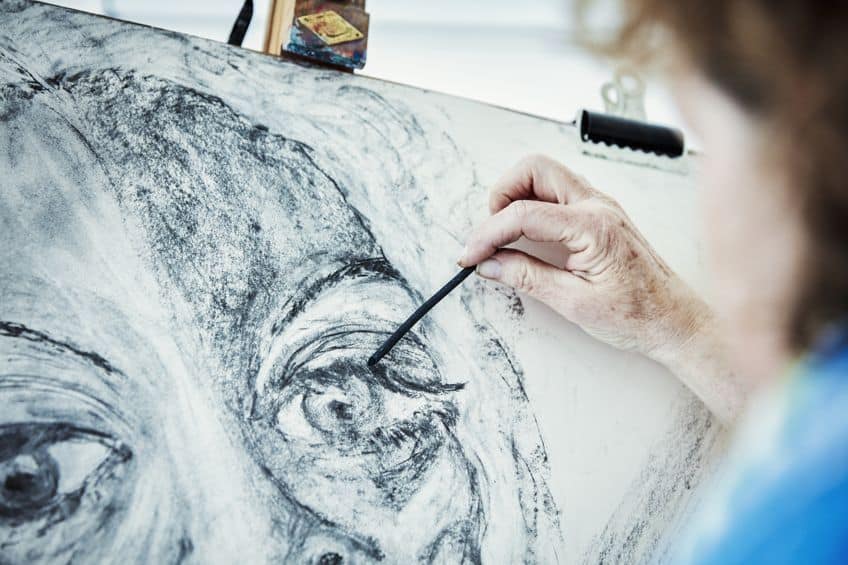
- Pencil drawing
- Colored pencil drawing
Styles of Drawing
Different styles of drawing can be representational, or they can be something more conceptual and abstract. There are two main drawing types, which include realistic drawings and more symbolic or expressive drawings. The first is drawing you create from images you capture with your eyes, while expressive drawings convey more emotion and movement.
There are also symbolic drawings, which use shapes, lines, and markings that represent a bigger and more complex idea or object. Here are a few more drawing styles.
- Figure drawing
- Landscape drawing
- Line drawing
- Cartoon drawing
- Caricature drawing
- Gesture drawing
- Photorealism
- 3D or perspective drawing
The Benefits of Drawing
Drawing is a way to express yourself and is a great way to communicate emotions. Drawings can tell a story, they can inspire, educate, or entertain. The process of drawing can be a way to relax, and something that can enrich your life. See a few benefits of drawing below.
- Improving hand-eye coordination
- Enhances creativity
- Reduces stress
- Improves memory
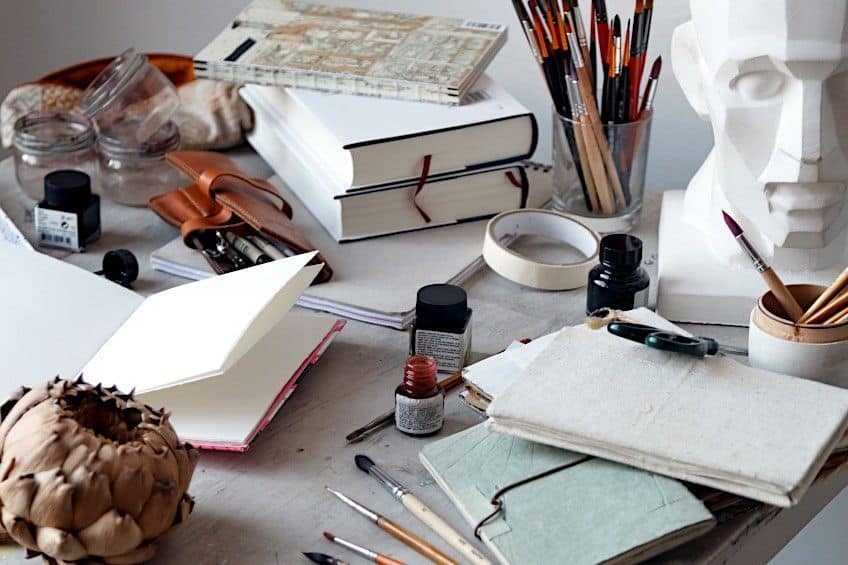
- Improves communication skills
- Can improve problem-solving skills
- Helps with fine motor control
- Develops more positive emotions
Famous Drawings
Maybe you can think of many famous paintings, but when it comes to drawings, can you name as many? As we have mentioned, many of the paintings were first sketches, however, below are a few drawings that stand out.
The Vitruvian Man (1492) by Leonardo da Vinci
| Artist | Leonardo da Vinci (1452 – 1519) |
| Year | 1492 |
| Medium | Pen, ink, and metal point on paper |
| Dimensions (cm) | 35 x 26 |
| Where It Is Housed | Gallerie dell’Accademia, Venice, Italy |
Leonardo da Vinci kept notebooks, which contained many detailed sketches of plants, animals, human anatomy, and more. The drawing is done on paper, using pen and ink, and depicts a male figure in two superimposed images, within a square and a circle.
This is also recognized as the “Canon of Proportions”.

Praying Hands (1508) by Albrecht Dürer
| Artist | Albrecht Dürer (1471 – 1528) |
| Year | 1508 |
| Medium | Ink on paper |
| Dimensions (cm) | 29 x 19 |
| Where It Is Housed | Albertina Museum, Vienna, Austria |
This is a fairly well-known image, an ink drawing of praying hands done by the German painter, Albrecht Dürer. He was one of the earliest artists to raise printmaking into a fine art form. He did many woodcuts, engravings, as well as etchings that contained detailed drawings.

Dancer (1880 – 1885) by Edgar Degas
| Artist | Edgar Degas (1834 – 1917) |
| Year | 1880 – 1885 |
| Medium | Pastel on paper |
| Dimensions (cm) | 48.9 x 32.4 |
| Where It Is Housed | The Metropolitan Museum of Art, New York City United States |
Edgar Degas was a French impressionist and was well-known for his pastel drawings as well as oil paintings. Most of his work was focused on dance, the human form in action, and everyday actions and activities.

If you are looking for a way to express yourself artistically, then drawing is a great place to start. Drawing only requires a few tools to begin and by using a few simple techniques, you can be creating art in no time. It is a great foundation to start from if you wish to develop your skills into something more challenging!
Frequently Asked Questions
What Is Drawing?
Simply put, a drawing definition can be described as a form of visual art that uses graphite and other tools to apply markings to a flat surface, such as paper. This will then create a drawing artwork that can be in different types and styles.
Is Drawing Essential in Art?
Drawing can be described as a fundamental skill that is used as the basis for many other art forms, like painting. It is often linked with problem-solving skills amongst other amazing benefits, and can be seen as an art form that stands independently.
How Can You Keep a Drawing Clean?
This is very easy to achieve, as all you need to do is to take a clean piece of paper and place this under your hand as you draw. This will help to prevent any smudging and will keep your hand clean from graphite marks.
Isabella studied at the University of Cape Town in South Africa and graduated with a Bachelor of Arts majoring in English Literature & Language and Psychology. Throughout her undergraduate years, she took Art History as an additional subject and absolutely loved it. Building on from her art history knowledge that began in high school, art has always been a particular area of fascination for her. From learning about artworks previously unknown to her, or sharpening her existing understanding of specific works, the ability to continue learning within this interesting sphere excites her greatly.
Her focal points of interest in art history encompass profiling specific artists and art movements, as it is these areas where she is able to really dig deep into the rich narrative of the art world. Additionally, she particularly enjoys exploring the different artistic styles of the 20th century, as well as the important impact that female artists have had on the development of art history.
Learn more about Isabella Meyer and the Art in Context Team.




